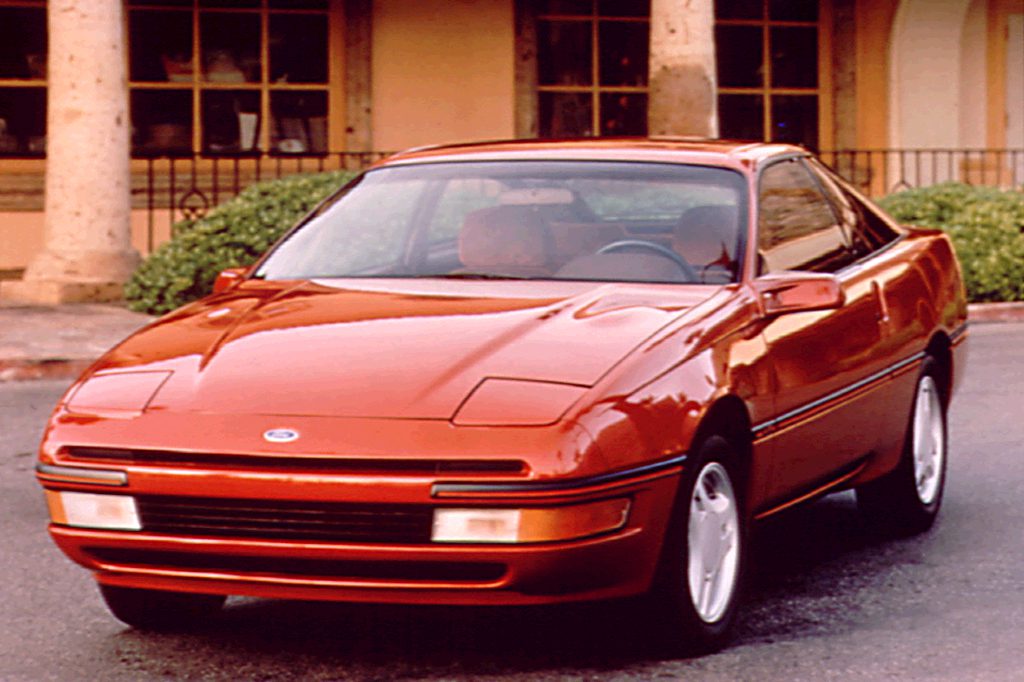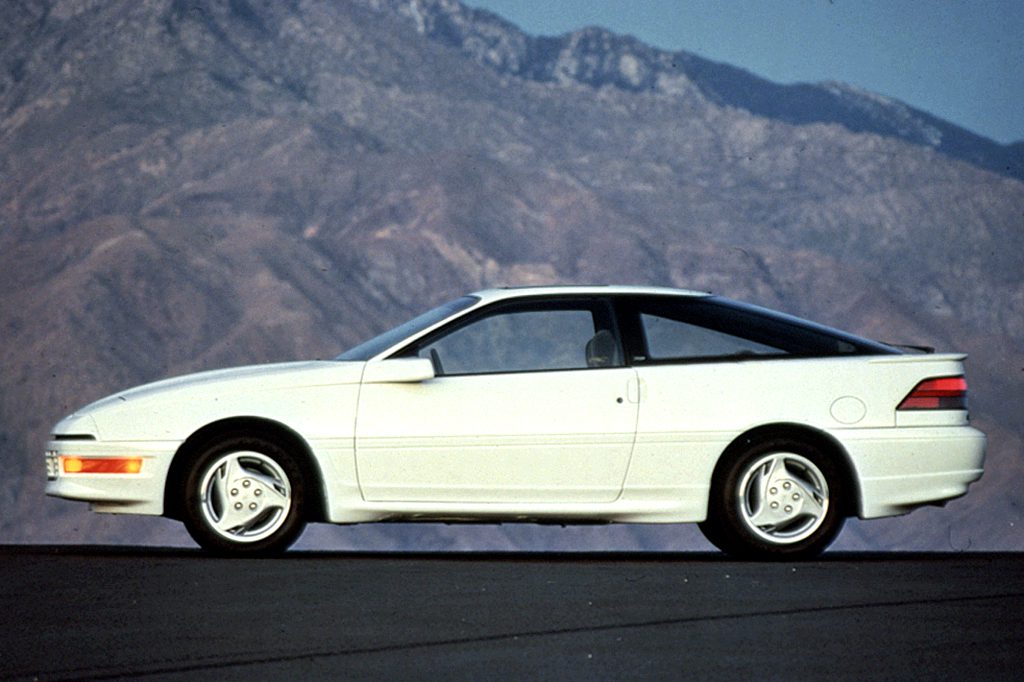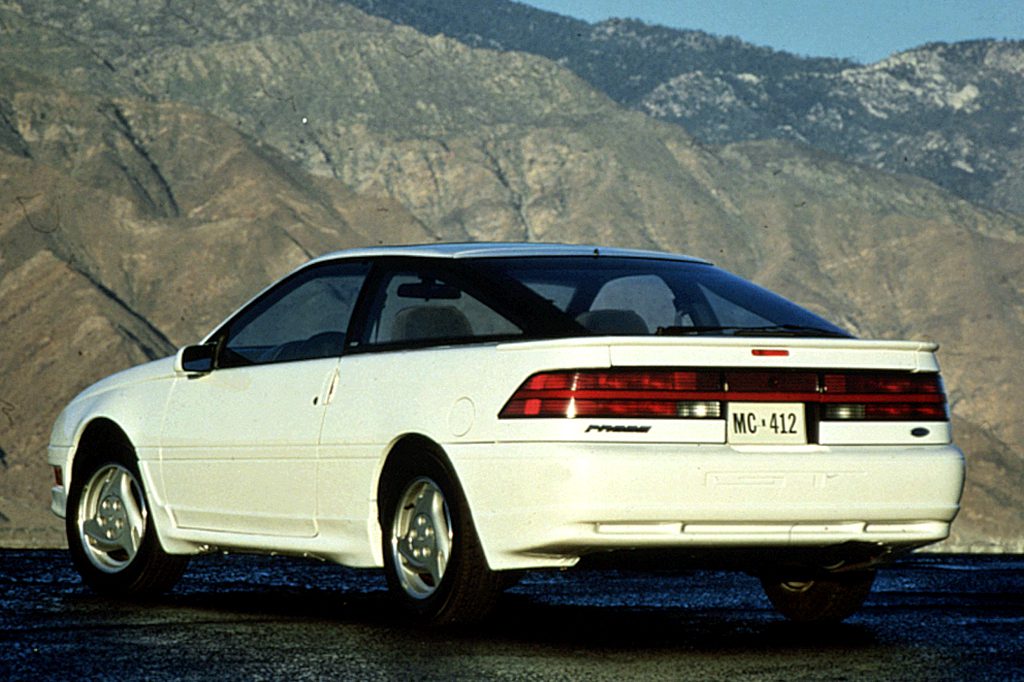| Sporty/performance car; Built in USA |
|
|
| Good condition price range: $1,000 – $1,700* |

1990 Ford Probe GT

1990 Ford Probe LX

1991 Ford Probe GT

1991 Ford Probe GT

1992 Ford Probe LS Sport
| Pros: |
|
| Cons: |
|
In midrange LX form, at least, the early Probe can be a passable sport-coupe choice. Best to steer clear of GT models, as the turbo four has a reputation for early failure.
Overview
Introduced for 1989, Ford’s sporty, front-drive hatchback coupe shared its chassis and powertrain with Mazda’s MX-6. Three models were sold: GL, LX, and GT. A V6 engine and all-disc brakes arrived for ’90 in the mid-range LX, which could now be ordered with antilock braking. The GT stuck with its 145-horsepower turbocharged 4-cylinder engine, but could now have an automatic transmission instead of the standard 5-speed manual gearbox. A non-turbocharged version of the 2.2-liter four, producing 110 horsepower, remained in the Probe GL. Rear shoulder belts were standard, and front shoulder belts became motorized.
Yearly Updates
| 1991 Probe No mechanical changes were evident in 1991. |
| 1992 Probe A new Sport option package for the LX included a rear spoiler and 205/60HR15 tires on alloy wheels–the same tire size as the GT. The under-seat stowage area was dropped, and GL and LX coupes gained body-colored side moldings and monotone fascia/bumper covers. |
